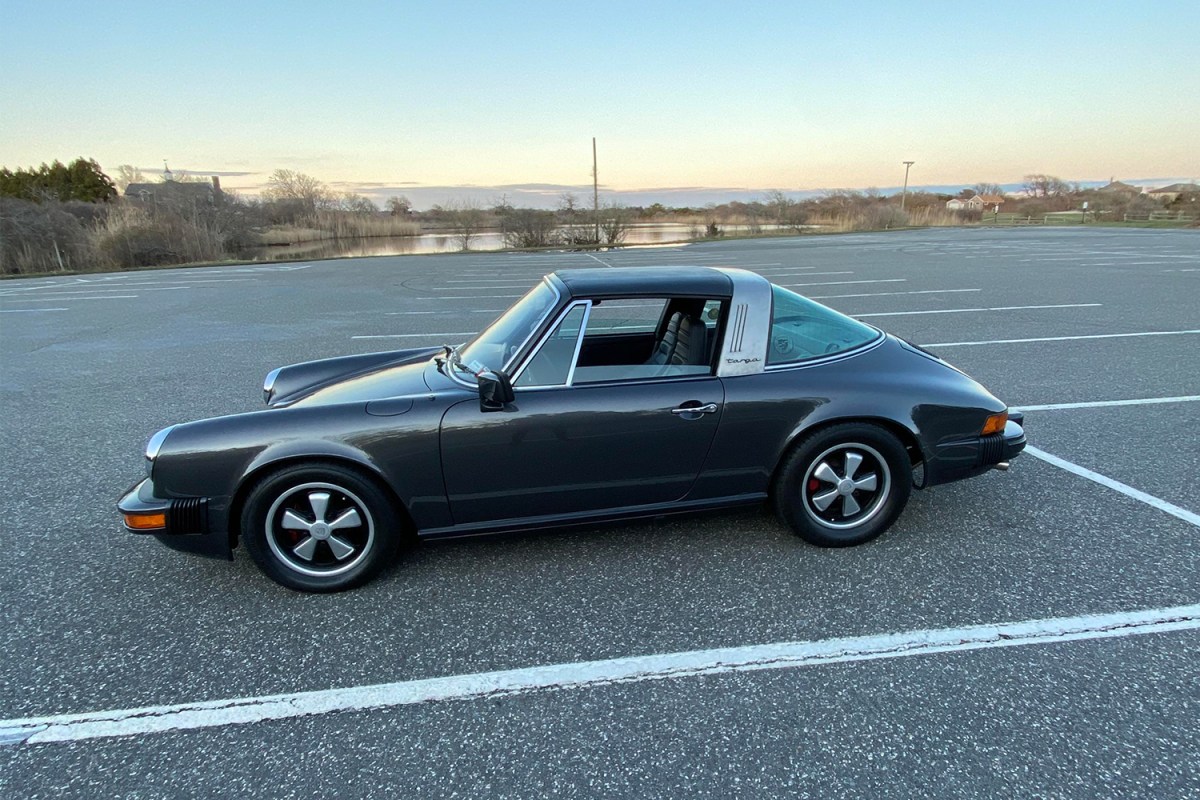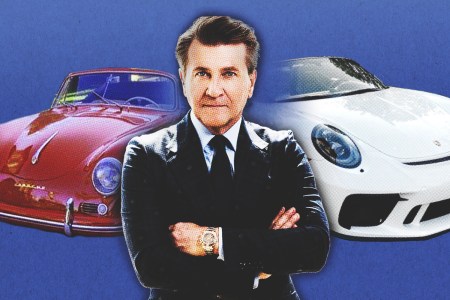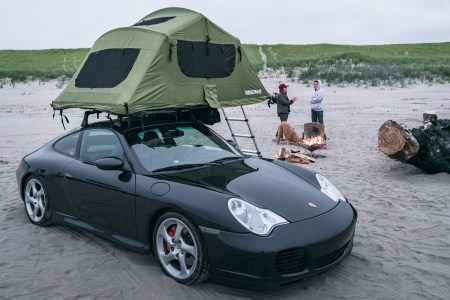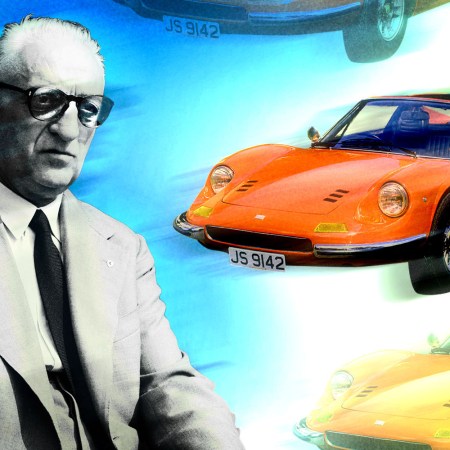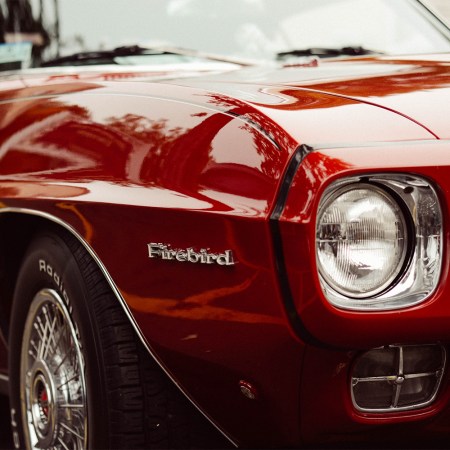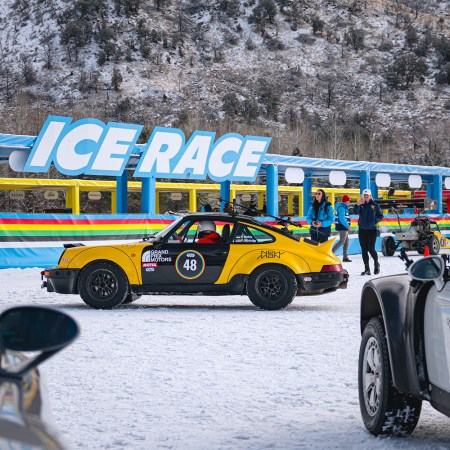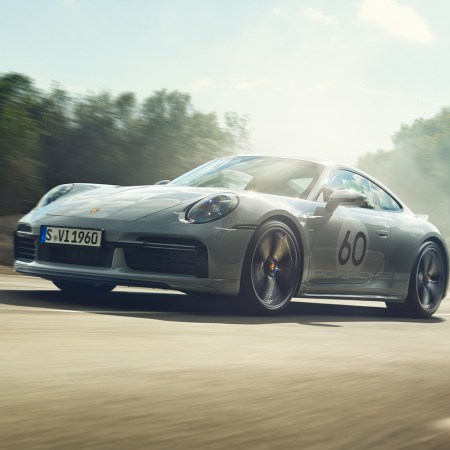The Porsche 911 is one of the most revered sports cars of all time, its legend only increasing as it enters its seventh decade of continuous production. September marks the 60th anniversary of the first example rolling off the line, so we’re sharing personal stories from a collection of owners: today, we revisit our interview with Dr. Evan Goldstein, who owns a 1977 Porsche 911 S Targa, among other vehicles. This was first published in May 2020 during the beginning of the Covid-19 pandemic.
You could certainly boil down the rules of car collecting into a handy little guidebook, and many have tried. (Google will gladly show you as much.) But ask anyone who does it for the love — and not just to expand their investment portfolio — and they’ll tell you the same thing: cars are like art.
“It could be a trillion-dollar painting and if I don’t feel it and if I don’t know the history of it and if I don’t meet the artist or see where it was painted and how it was put together, I would never buy the piece even if it’s the best bang for your buck,” Dr. Evan Goldstein tells InsideHook. “It just doesn’t fit. It just doesn’t fit my world.”
In other words, car collecting is personal. How one person goes about it is not necessarily how you should go about it. To offer some guidance on finding what works for you, whether you’re looking to make your first vintage Porsche purchase or you’re a seasoned collector in need of some inspiration, we dialed up Dr. Goldstein, a distinguished anal surgeon, founder of the practice Bespoke Surgical and co-founder of sex-care company Future Method.
What’s his best piece of advice? “Porsches are meant to be driven, Ferraris are meant to be looked at.”
Don’t worry, he’ll explain.
InsideHook: First off, what has your personal and professional life looked like the last couple months during all of this?
Dr. Evan Goldstein: In terms of right away, we had the luxury of moving out of the city, bringing the kids to East Hampton, where we rented a house through our friends where we’ve been able to kind of quarantine in a controlled environment. I don’t think anywhere in the United States is controlled, specifically New York. So for the first four to five weeks, we kind of were on our own property and doing our own thing. It obviously gave me access to driving my Porsches, which is great, because it’s such a great quarantining spot, to be in the car. And I was able to start to see where the world was.
Now from a surgery perspective, a lot of the surgeries that I do fit into a little bit more urgent criteria. So I have not been hit as hard as a lot of my plastic surgical friends. I’ve been still coming into the city one day or two days a week and I operate and see clients. And I’ve been doing surgeries and I could start to see over the last three to four weeks that everything has been slowly ramping up, though I still think there’s a lot of chaos, a lot of unknown, and New York specifically is not the New York that we know and want to be a part of right now.
Robert Herjavec Knows How to Win Friends and, More Importantly, Porsches
The Emmy-winning “Shark Tank” veteran explains how he amassed his enviable car collection, and why his 911 Speedster is a favorite even among rarities from Ferrari and LamborghiniSpeaking of taking some solace in driving, has there been a specific car that you have been finding particular pleasure in the last couple months?
I have a 1965 [Porsche] 356 SC which is one out of — I think it’s 3,400 produced out of that year — and it’s just such a great car. It’s so interesting, because last year I didn’t drive it that much just because life was kind of crazy. I remember one specific drive where I came back and my dad was staying with us at the time and I said, “If I’m only allowed to get one drive a year out of this car, I still would pay everything that I own to be able to experience one drive in that car.”
I bought that car maybe four or five years ago out of an estate. He was the chief editor of [a Pittsburgh newspaper]. He bought it from the lot and he drove that car every day. It was his daily driver from a suburb to the heart of Pittsburgh. I took it over as the second owner, all original. I know Emory cars and Singer cars and all of that — I am a very particular truist. I think that it’s so amazing to be able to drive in a piece of history and to feel it as it was produced. It’s pretty fucking unbelievable. And that 356, it’s a four-speed, it’s nothing more than a VW engine. But in that body, in that context, when you’re in that car, I mean, you’re in heaven. It’s just such a pleasure to drive.
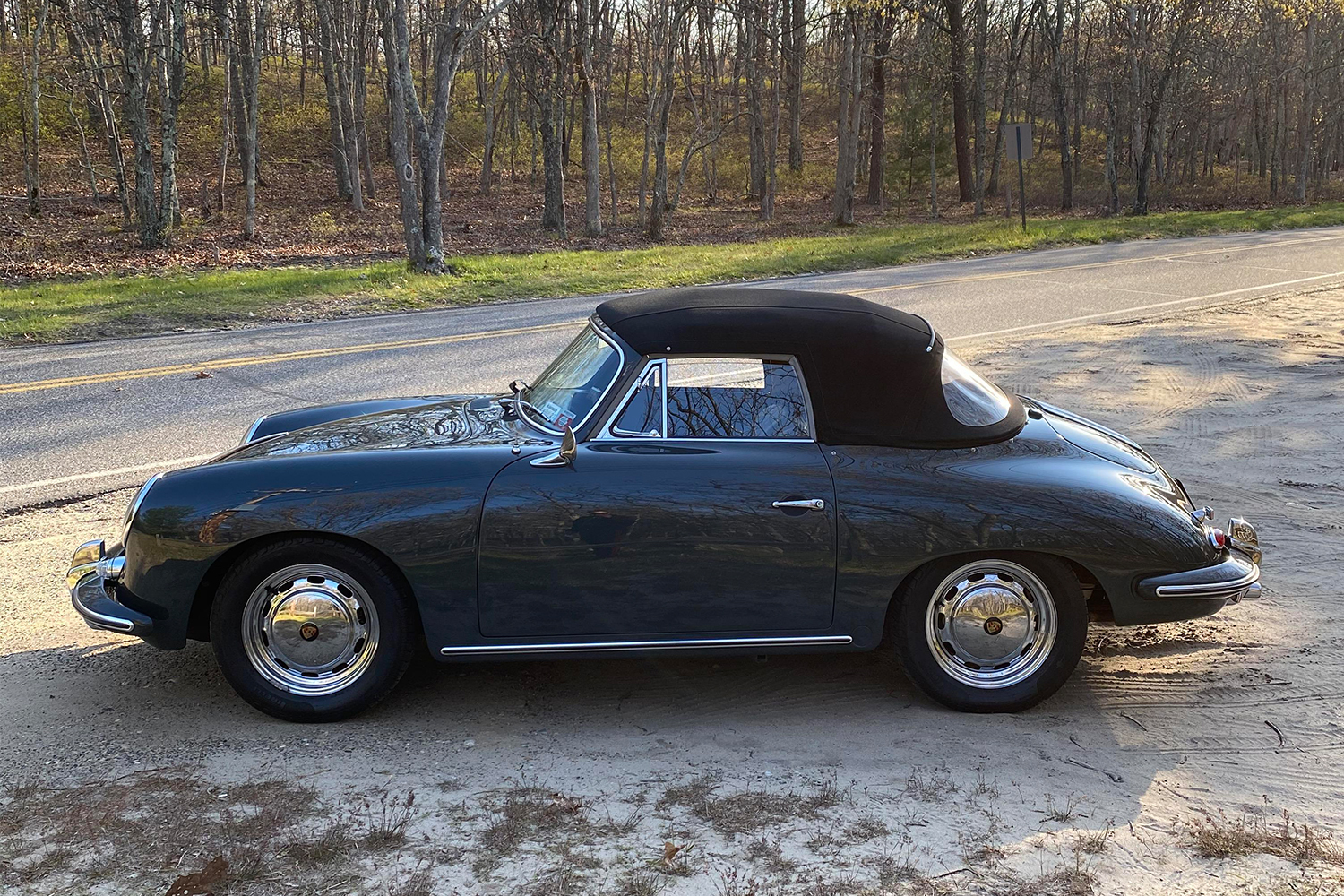
What was your entry point into car collecting? Did you build up a love of authentic vintage cars or was it always that way with you?
It was always vintage. It was interesting, I just stumbled upon the 356. There’s a place called Cooper Classics, which is in the West Village. I was walking past there and I was looking at actually a Ferrari, a 312, and when I walked past that there were two 356 cabriolets in the window and one was this red with tan interior and the other was this kind of slate gray that I was like, “Holy shit, that car is fucking unbelievable.” I went in and of course I chose the most expensive car in the fucking showroom. I sat in both, and I wanted something that — I’m not somebody that wants to be very showy. I never was. This is all about me. It’s not about other people. This is a car that I wanted because it is actually very understated.
Listen, if you know that car, when you see that car, you’re like, “Holy shit, this car, I get it,” right? But it’s also a car where you may walk past it and some people may not necessarily notice it. I liked that because I never really want to be the center of attention. If I’m going down the street, I’m probably not going to go down the main drag of a town. I’d rather go around it because it’s all about me and the car, feeling the car, being a part of something that was born out of 1965.
It’s the same thing when I collect art. It could be a trillion-dollar painting and if I don’t feel it and if I don’t know the history of it and if I don’t meet the artist or see where it was painted and how it was put together, I would never buy the piece even if it’s the best bang for your buck. It just doesn’t fit. It just doesn’t fit my world. But when I saw this car, it’s just like anything, you see the car and you’re like, “Holy God, this is what I want.” And then I saw the price tag of this car and I was like, “Holy fuck, how am I going to swindle this?”
Then I just said, “You know what? Life is too short.” I put together enough to make it my own and my own reality. It was actually luck of the draw. Cooper Classics, not to talk bad about places, but when you start to learn about cars, you start to see who’s really good at what they’re doing. I work really closely with a guy by the name of John Stankiewicz [of Timeless Classics Auto], and John has worked with me at a place called Goodfriend Motors, and through these people you start to figure out what works and how do you get the car to the truest potential. I should have been smart and put a little bit of money into it and learned the thing, but no, of course I said, “You know what, go with the best thing out there and spend the most money and then figure it out using that as your first soiree into it.”
At least you know that now. At least you’re not just buying up cars left and right.
I did know that car, in and of itself, if I treated it right, I would never lose money on that car. First of all, I drive every single car that I ever collect. You know, Porsches are meant to be driven, Ferraris are meant to be looked at. Any car that I ever get, whether it’s a Ferrari, whether it’s an old VW, whatever it is, I’m driving that car. And especially a 1965 356, that car needs to be run like a dog, man. It needs to be taken out all the time, because if you don’t do it, it just doesn’t run to where you want it to be.
What are the simple things you’d tell a budding collector to do before they bought their first car?
I would have John [Stankiewicz] go and take a look at this fucking thing. I would pay him his fees to make a trip and check it out from soup to nuts and see if it’s workable, because that leads us into my second car. My second car is a 1977 [Porsche] 911 S Targa. The ’77s are definitely not a desirable year yet, and that’s why it’s very, very attractive. The problem is that they had a lot of complications in the ‘70s with those cars, and you can get yourself into a real fucking shit show when you think you’re getting a deal, but the reality is it needs so much work. And that’s what happened with me and that ’77.
What I put into it to get it to where I wanted it to be is nowhere near where the value is in that car. Now that’s a car that you sit on and you have fun with and you toy around with and you let see what happens over the next 20, 30 years. If it’s done right, I think you can be somewhere. But again, I think [number] one is really making sure to just pay the money to have a mechanic that really knows these types of cars in and out so that they can evaluate. I also think another one is to make sure that you’re going to drive the thing, and kind of push it and learn about what feels good, what doesn’t, how do you know when things are off and really start tinkering.
Do you separate your cars into an investment category and a driving category? Or do you treat them the same?
Let’s take this quarantine, right? I called John, my mechanic, and I said, “Okay, I’m moving. I need you to take the 356, get it primed up and ready to rock and roll for the summer locally.” I said, “Take the ’77. Let’s raise the body up. Let’s put bigger tires on the thing, because I may take that to the city periodically during the summer.” So I think it’s understanding the value, but also where I am in my world. The 356 I would never bring into the city. I know that car is $300,000-plus, and in order to keep it that way, it needs to be a driver, but on an appropriate track. Whereas the ’77 is a hit or miss, and at the end of the day, you want to have fun with these cars as well.
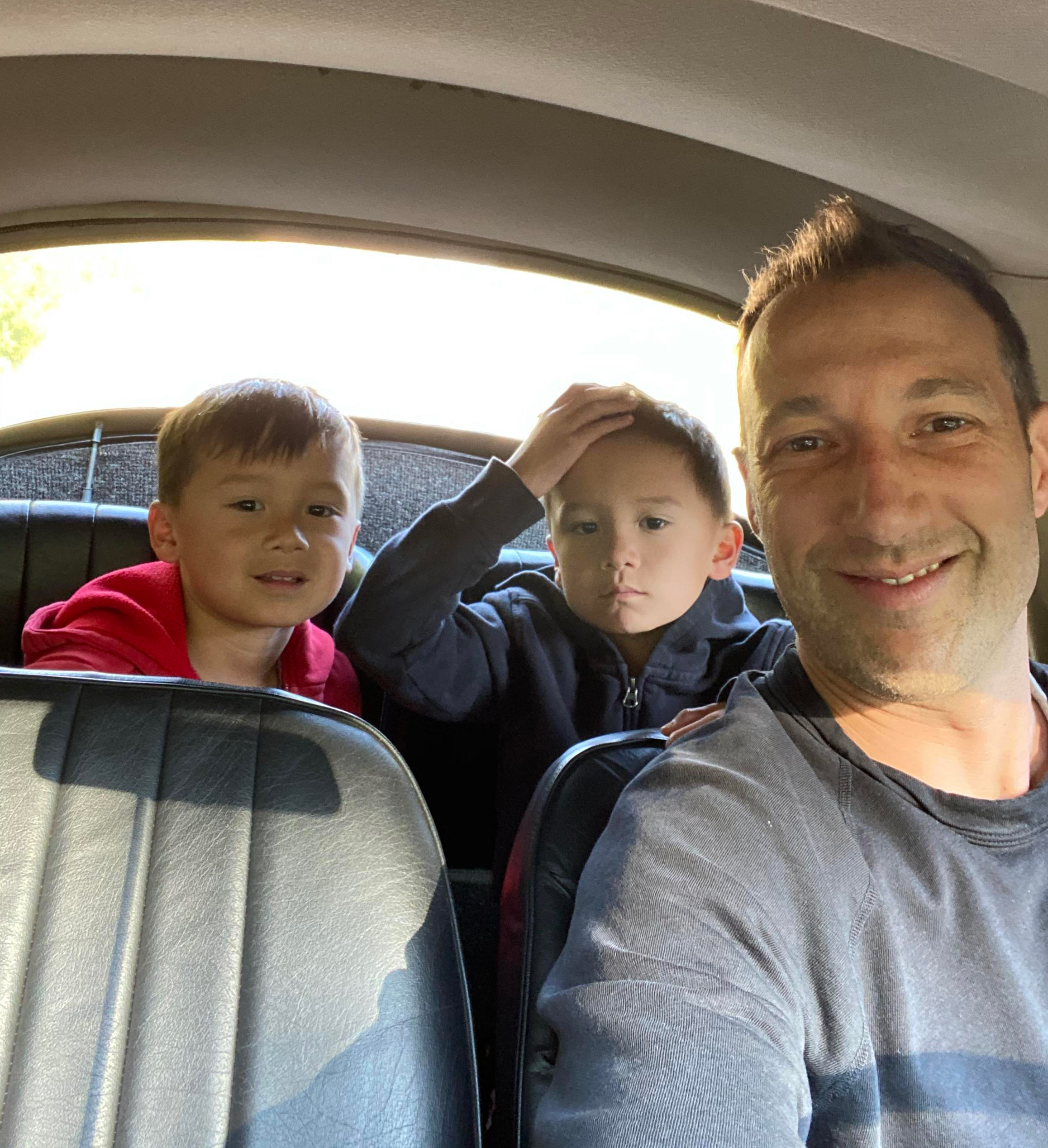
If one night or one day I’m heading to the city to go operate and I’m like, “Fuck it. It’s 35 minutes into the city. I’m taking this down on the FDR and through Times Square and having fun with it.” I think that with the ’77 I would do that, the 356 I wouldn’t.
For my next car, I was looking at the VW sports, like the 1960s Karmann Ghia. I’m looking at either that or a BMW, like the 318s or the early BMWs, but as a driver. So I wouldn’t necessarily put the concours $100,000 into it, but I would probably say, “Okay, 30 to 40 grand, great. Let’s buy it, get it up to speed.” And I’m fucking driving that shit, whatever happens happens, you know? So it’s just a matter of where you’re at.
How to Car Camp in a Porsche, According to Brock Keen of @996RoadTrip
Keen tells us the story behind his Instagram-famous 911 Carrera 4S — the one with the rooftop tentIs Porsche a marque that you like across generations, even up to the present with the Taycan, or are you vintage only with them?
So I just sold and released a 2016 [911] Targa 4S that I got, which was the first year of the retractable electric roof, and I drove that car. I think a couple of things for me: one is if I ever got a new Porsche again, I would only get a stick shift. The Tiptronic [transmission] for me, it’s fun, but it doesn’t do it for me. I really need to feel that I’m driving. Do I love the new cars? Look, I think they’re beautiful. They drive so well. I think the reality is I can’t take that car, what it needs to be, on the roads of East Hampton and Bedford, New York. It’s like, okay, I can do 40 miles an hour and I’m okay with doing that, but I’d rather do that in a 1965 or a 1977 Targa soft-top. That’s where my MO is. I’m more marijuana than coke right now. You know what I’m saying?
Totally.
I’m not so “only on Porsche.” I just think when you look at cars, especially vintage on fixability, [Porsche is] so much more easily and readily accessible from a parts perspective, which just makes collecting that much easier for me. My friend has a Ferrari. You’ve got to take out the engine every time and if anything goes wrong you’re looking at ridiculous amounts [of money to fix it]. And most people’s Ferraris, they care so much about mileage on the car, whereas a Porsche, with most people, they want it reasonable, but they want it to be driven. They want to see that people are putting the miles on that thing.
What do you think the future of the manual transmission is going to be?
I don’t think it’s necessarily ever going to end. I think that it may have to be a special order or something like Porsche was doing for a while when we couldn’t get it on their cars. I mean, you tell me when you’re interviewing people, I’m assuming most people are in the same boat where they feel like PDK is great, you’re able to get such great speed and you’re never able to shift to that capacity, but you lose the essence of feeling one with the car.
Yeah, interviewing people who work at these brands and other car enthusiasts, they just say that it’s going to be super niche, but it’s never going to stop.
I totally agree with that. I mean, especially with the 911 and the old 365s and all that stuff, Ferdinand and his team, it’s so amazing to see that evolution of the car, but I’ve driven every decade at some point and I would go back to the ‘60s in a heartbeat. If anybody said to me, “What car would you drive? The only car you could drive ever again?” It would be 1960s, early, early, early Porsches. You honestly feel so connected to the car and it’s such a rough, rugged, but such a tight ride. It’s fucking amazing. I don’t know. Rugged and tighter. That’s the way it feels.
Are there any other cars you own that you haven’t mentioned yet?
Not that’s classic vintage. I’m in a BMW X7 right now, which is a nice car. That’s a fun car to drive. I just got the Jeep Wrangler Sahara limited-edition, just to fuck around with.
But I think at the end of the day, I need manual transmission and I need something that has a tremendous amount of history on it. I don’t know if it’s the ghosts that are in there or the presence. Like the ’77 Targa — I’m the second owner, it was actually owned by a pharmacist and it was a woman, and she drove that fucking car in lime green, mint green from the time she bought it in 1978 until I bought it about three years ago. She must be in her ’80s or something now, but I could just see her in this lime, mint green car driving down the road, going to CVS working as a pharmacist. And you’re like, what a badass.
The last thing I want to ask: is there a holy grail car for you?
My holy grail. I am looking at a Ferrari Dino. I think that will be my next car, and it has to be a driver for me, so I have to do really good due diligence on it. But that car for me, I think that when you look at Ferrari, moving forward, I can appreciate it and I think the lines are wonderful — but when you look at [the Dino], just thinking about how they created that at that time just light years ahead. It’s so fucking beautiful, especially with the stick shift being so high up, I just can’t wait to slam that shit the second I get it.
The problem is that I don’t really have a home, so the current home that I’m in right now, I don’t have a garage. So I rented some space in a car club. But now I finally — after five years of car collecting — the house we’re moving into has a three-car garage. I am so happy I’ll be able to pull the cars into the garage, not have to cover them, not have to do anything as I pull in and pull out. I’m super, super happy about that.
Answers have been edited and condensed for clarity.
This article was featured in the InsideHook newsletter. Sign up now.
